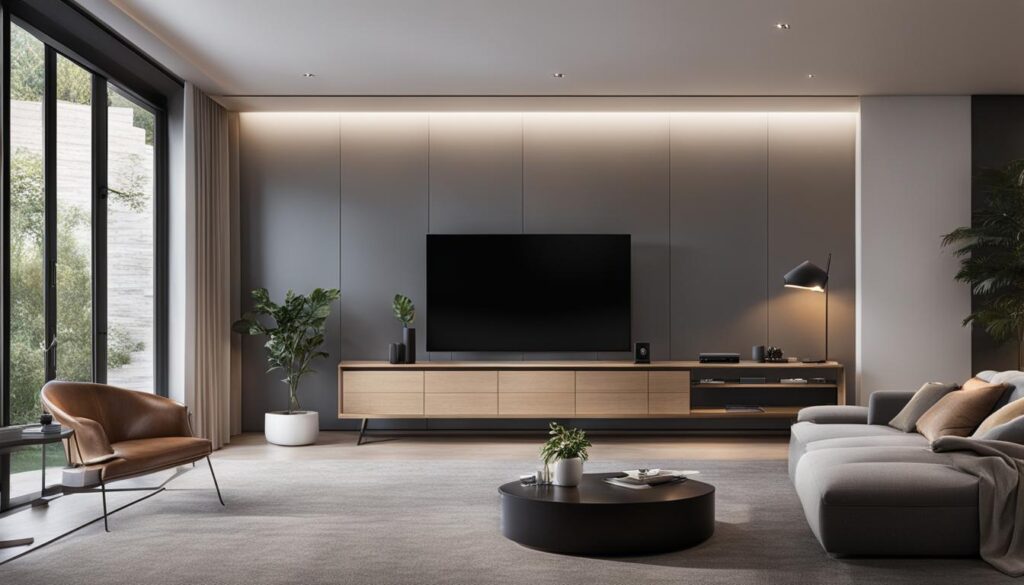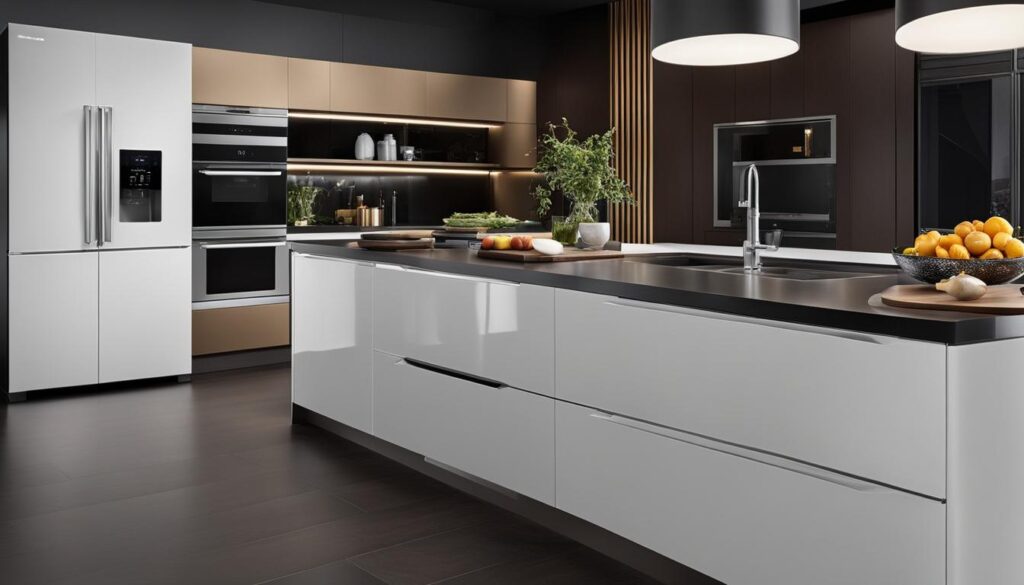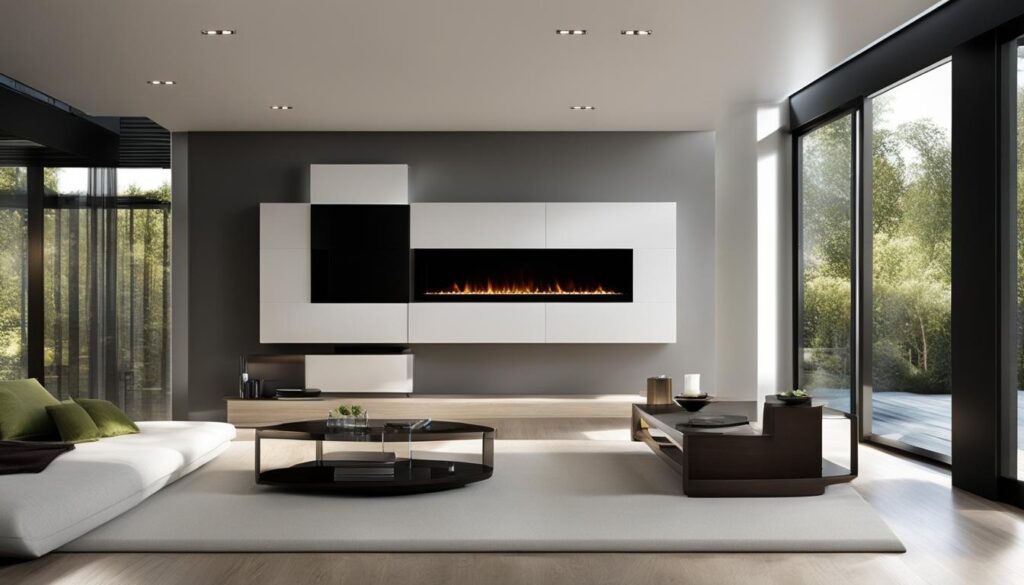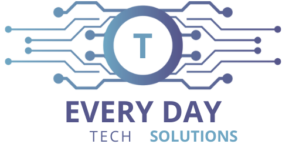As technology continues to advance, our homes are getting smarter. Smart home technology and home automation systems have become increasingly popular, offering convenience, security, and energy efficiency. From controlling lights and appliances with a voice command to monitoring your home’s energy usage from your smartphone, home automation devices are transforming the way we live.
The Internet of Things (IoT) has enabled the integration of various devices and systems, creating a connected ecosystem within our homes. From smart thermostats that learn our preferences and adjust temperatures accordingly to security systems that can be controlled remotely, home automation solutions are making our lives easier and more comfortable.
In 2023, we can expect to see several exciting trends in home automation:

Key Takeaways:
- The integration of smart home tech is enabling seamless communication and control of multiple devices.
- Advancements in artificial intelligence and IoT are driving the intelligence behind smart homes, with voice assistants and smart appliances becoming more prevalent.
- Touchless tech, such as touchless doorbells and mobile app control, is gaining popularity for improved hygiene and convenience.
- Smart thermostats are widely adopted for personalized temperature control and energy efficiency.
- The rise of health tech in smart homes includes devices like air quality sensors and advanced smart toilets, promoting better well-being.
Integration of Smart Home Tech
One of the top trends in home automation is the integration of smart home tech. With advancements in technology, smart home devices are becoming increasingly connected and integrated, allowing for seamless communication and control. This integration of smart home tech brings numerous benefits to homeowners in terms of convenience, efficiency, and ease of use.
Gone are the days of having to control each smart device separately. Now, with integrated smart home systems, I can easily manage multiple devices from a single interface. Whether it’s adjusting the lighting, temperature, security systems, or even the entertainment setup, I have complete control at my fingertips.
Moreover, the integration of smart home tech enables the creation of automated routines and scenarios. I can program my smart home to automatically adjust the thermostats, turn on the lights, and play soothing music as I walk through the front door. This level of automation enhances the overall experience and creates a truly connected living space.
Easy to Use and Accessible for Everyone
Another significant advantage of the integration of smart home tech is the improved ease of use. In the past, smart home systems were often complex and required technical expertise to set up and operate. However, advancements in user interface design and intuitive app development have made smart home technology accessible to all homeowners, regardless of their technical proficiency.
Now, instead of dealing with complicated installations and intricate programming, I can simply connect my smart devices to a central hub or use a user-friendly mobile app for control. The user interfaces are designed to be visually appealing, straightforward, and easy to navigate.
“Integration of smart home tech allows for seamless communication and control of multiple smart devices, enhancing convenience and efficiency.”
Furthermore, voice assistants like Amazon Alexa and Google Assistant have made interacting with smart home devices even more intuitive. With a simple voice command, I can control the lights, adjust the temperature, or play my favorite music. The integration of voice control adds a layer of convenience and versatility to the overall smart home experience.
The table below highlights some of the key benefits of integrating smart home tech:
| Benefits of Integration | Description |
|---|---|
| Seamless Communication | Enables effortless control and communication between different smart devices. |
| Automated Routines | Allows for the creation of customized routines and scenarios for enhanced convenience. |
| Improved Ease of Use | Makes smart home technology accessible to all homeowners, regardless of technical expertise. |
| Voice Control Integration | Enables hands-free control of smart devices through voice assistants. |
With the integration of smart home tech, I can truly experience the connectedness and ease of use that modern home automation systems offer. From controlling multiple devices with a single touch to creating personalized automated routines, the possibilities are endless. Whether you’re a tech-savvy homeowner or just looking to streamline your daily routine, integrating smart home tech is a smart move.
Advancements in Artificial Intelligence and IoT
Artificial intelligence (AI) and the Internet of Things (IoT) are at the forefront of driving the intelligence behind smart homes. With the rise of voice assistants like Amazon Alexa and Siri, AI has become increasingly integrated into our daily lives. These intelligent voice assistants are capable of understanding commands and responding in relevant and helpful ways, further enhancing the convenience and functionality of smart homes.
IoT advancements have also revolutionized the way we interact with our homes, particularly in the context of the kitchen and bathroom. In the smart kitchen, IoT-enabled appliances and devices are seamlessly integrated to create a connected cooking experience. From smart refrigerators that can suggest recipes based on available ingredients to voice-controlled ovens that streamline the cooking process, these advancements make cooking more efficient and enjoyable.
Similarly, the smart bathroom is experiencing significant transformations with the integration of IoT. Smart fixtures and devices like voice-activated showers, smart toilets, and intelligent mirrors offer enhanced functionalities and convenience. For example, voice-activated showers allow users to control water temperature and pressure effortlessly, while smart toilets offer features like automatic seat heating, personalized bidet settings, and even health tracking capabilities.

These AI and IoT advancements go beyond convenience and comfort. They also play a crucial role in optimizing energy consumption, improving air quality, and providing health insights in the kitchen and bathroom. By intelligently monitoring and analyzing data, smart appliances and fixtures can help homeowners make informed decisions about their energy usage, reduce waste, and create a more sustainable living environment.
The future of smart homes relies heavily on the continued advancements in AI and IoT technologies. As AI models become more sophisticated and IoT devices become more seamlessly integrated, we can expect even greater capabilities and functionalities in our homes. The possibilities are endless, and the smart kitchen and smart bathroom are just the beginning of an intelligent and connected future.
Touchless Tech for Improved Hygiene
Touchless technology has become increasingly popular, particularly in response to the Covid-19 pandemic. Homeowners are now seeking smart home devices that minimize the risk of germ transmission and promote hygiene. One of the key touchless tech innovations is the emergence of touchless doorbells, which allow visitors to announce their presence without physically pressing a button.
But it doesn’t stop at doorbells. Many other smart home devices are also integrating touchless technology to reduce the need for physical contact. For example, smart faucets in kitchens and bathrooms can be activated with a simple wave of the hand, eliminating the need to touch potentially contaminated surfaces.
Mobile app control is another essential feature of touchless tech. With the ability to control various home devices via mobile apps, homeowners can easily manage their smart home systems without the need to physically touch switches, panels, or remotes. This not only enhances convenience but also promotes good hygiene by minimizing contact with frequently-touched surfaces.
As touchless technology continues to advance, it has the potential to expand beyond doorbells and faucets. Imagine a fully touchless smart home where voice commands and gestures control everything from lighting and temperature to security systems and entertainment centers. The possibilities are endless.
The Future of Touchless Tech
With the ongoing focus on hygiene and the demand for smart home solutions, touchless tech is expected to play a significant role in shaping the future of home automation. As more touchless devices enter the market and become more affordable, homeowners can create safer and more hygienic environments for their families.
In addition to the convenience and hygiene benefits, touchless tech also offers increased accessibility for individuals with mobility challenges. Mobile app control, voice commands, and gesture recognition allow easy and independent control of smart home devices, enhancing the quality of life for those with disabilities.
To fully appreciate the impact of touchless tech in the smart home industry, let’s take a look at the table below, outlining some key touchless devices and their features:
| Touchless Device | Features |
|---|---|
| Touchless Doorbell | – Motion detection – Remote viewing and communication |
| Smart Faucet | – Wave or voice activation – Temperature and flow control |
| Smart Lighting | – Voice control – Motion sensors – Dimming capabilities |
| Smart Thermostat | – Mobile app control – Temperature scheduling – Energy efficiency |
As touchless technology continues to evolve and integrate with other smart home systems, it will undoubtedly revolutionize the way we interact with our living spaces, providing a safer, more convenient, and hygienic home environment.
Popularity of Smart Thermostats
Smart thermostats have gained immense popularity in the realm of home automation. These innovative devices offer homeowners personalized temperature control and bring a host of benefits to both comfort and energy efficiency.
“Smart thermostats are revolutionizing the way we control and manage our home’s climate. With advanced features and remote control capabilities, they provide a seamless experience for homeowners.”
One of the key advantages of smart thermostats is their ability to be adjusted remotely. Whether you’re at work, on vacation, or simply not in the room, you can easily control the temperature settings of your home with just a few taps on your smartphone. This remote control functionality not only adds convenience but also helps optimize energy consumption, resulting in significant cost savings on utility bills.
Smart thermostats are designed with energy efficiency in mind. They utilize advanced sensors and algorithms to learn your heating and cooling preferences, automatically adjusting settings to ensure maximum efficiency without compromising comfort. By actively monitoring and optimizing energy usage, these devices contribute to a greener environment by reducing carbon footprint.
Paired with a smartphone app, smart thermostats provide homeowners with complete control over their home’s heating and cooling systems. The user-friendly interface allows for easy scheduling, temperature adjustments, and even energy usage monitoring. With real-time insights and personalized settings, you can create the perfect climate for your home while being mindful of energy consumption.
Benefits of Smart Thermostats:
- Remote control and access through smartphone apps
- Optimized energy consumption and reduced utility bills
- Improved comfort with personalized temperature settings
- Contribution to environmental sustainability by reducing carbon footprint
- Real-time insights and energy usage monitoring
Smart thermostats are a practical and eco-friendly addition to any smart home. With their energy-saving capabilities, convenient remote control, and personalized comfort settings, these devices offer homeowners a seamless and efficient way to manage their home’s climate.

| Smart Thermostat | Features | Price |
|---|---|---|
| Nest Learning Thermostat | Learning capabilities, Energy-saving features, Compatibility with smart home systems | $249 |
| Ecobee SmartThermostat | Room sensor compatibility, Voice control integration, Energy reports | $249 |
| Honeywell Home T9 | Geofencing technology, Smart response learning, Touchscreen display | $199 |
Rise of Health Tech in Smart Homes
With the growing prominence of health tech, our smart homes are becoming more focused on our well-being. Incorporating advanced technologies, these homes aim to create a healthier indoor environment for individuals and families.
Air quality sensors play a crucial role in maintaining optimal indoor air quality. By continuously monitoring the air, these sensors detect pollutants and allergens, allowing homeowners to take proactive measures for cleaner and healthier air. This is especially important for those with respiratory conditions or allergies.
Smart water filtration systems are another significant development in health-focused smart tech. These systems are designed to remove impurities from tap water, ensuring that the water consumed is clean and safe. By providing purified water, they help protect our health and reduce reliance on single-use plastic bottles.
Moreover, advanced smart toilets are revolutionizing personal hygiene. These toilets are equipped with features like self-cleaning capabilities, heated seats, and bidet functions, offering a more comfortable and hygienic bathroom experience. Some models even include health analysis features, which can provide insights into urinary tract infections, dehydration, and other conditions.
FAQ
What are the latest trends in home automation?
The latest trends in home automation include integration of smart home tech, advancements in artificial intelligence and Internet of Things (IoT), touchless tech for improved hygiene, the popularity of smart thermostats, the rise of health tech in smart homes, and the increasing importance of high-speed internet connection and high-tech security.
How are smart home devices being integrated in home automation systems?
Smart home devices are becoming fully integrated, allowing for seamless communication and connectedness. This integration makes it easier to control multiple devices and create automated routines. Ease of use has also improved, making it accessible for all homeowners, regardless of their technical expertise.
How is artificial intelligence driving smart homes?
Artificial intelligence and IoT advancements are driving the intelligence behind smart homes. Voice assistants like Amazon Alexa and Siri have become popular, and AI continues to improve in understanding commands and responding in relevant ways. IoT advancements have significant implications for smart homes, particularly in the smart kitchen and smart bathroom space.
How does touchless tech improve home automation?
Touchless technology, such as touchless doorbells and mobile app control, minimizes the risk of germ transmission and promotes hygiene. Many home devices can be controlled via mobile apps, reducing physical contact and enhancing convenience and safety.
Why are smart thermostats popular in home automation?
Smart thermostats are widely adopted and offer personalized temperature control. They can be adjusted remotely, helping to optimize energy consumption and save on utility bills. Smart thermostats also contribute to environmental sustainability by reducing carbon footprint.
How does health tech contribute to smart homes?
Health tech has gained prominence, especially during the Covid-19 pandemic. Smart home devices are integrating features focused on health and well-being, such as air quality sensors, smart water filtration systems, and advanced smart toilets. These devices help maintain optimal indoor air quality, provide insights into health through data analysis, and improve overall well-being.




